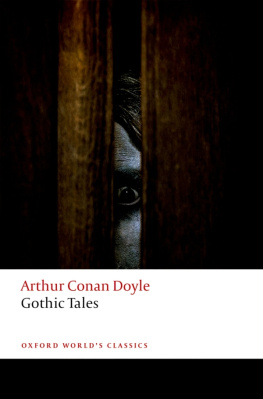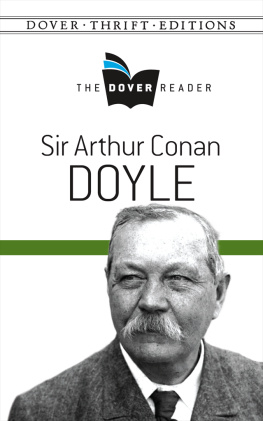
Other titles in the
T O P F I V E C L A S S I C S series:
Edgar Allan Poe: Complete Tales & Poems
The Raven (Illustrated)
Dracula
Treasure Island
The Strange Case of Dr. Jekyll and Mr. Hyde
Jane Eyre
A Tale of Two Cities
Great Expectations
A Christmas Carol
Pride and Prejudice
Robinson Crusoe
The Adventures of Sherlock Holmes
The Memoirs of Sherlock Holmes
The Hound of the Baskervilles
The Call of the Wild / White Fang
TOP FIVE CLASSICS is a series of illustrated great works, created and formatted specifically for ereaders and distributed at low cost. Visit our for more information on our titles.
A T O P F I V E C L A S S I C
Published by Top Five Books, LLC
521 Home Avenue
Oak Park, Illinois 60304
www.top-five-books.com
Introduction, About the Author, cover and internal design copyright 2014 by Top Five Books, LLC.
All rights reserved. No part of this book may be reproduced or utilized in any form or by any means, electronic or mechanical, including photocopying, recording, or by information storage and retrieval system without express written permission from the publisher.
The Case-Book of Sherlock Holmes by Sir Arthur Conan Doyle appears in this edition by permission of Conan Doyle Estate Ltd., www.conandoyleestate.co.uk.
A Study in Scarlet was first published in Beetons Christmas Annual in 1887, and in book form in July 1888 by Ward, Lock & Co. The Sign of Four was first published (as The Sign of the Four; or, The Problem of the Sholtos) in Lippincotts Monthly Magazine in February 1890, and in book form in October 1890 by Spencer Blackett. The Adventures of Sherlock Holmes was first published in monthly installments in the Strand Magazine from July 1891 to June 1892, and published in book form in October 1892 by George Newnes Ltd. in Great Britain and Harper & Brothers in the U.S. The Memoirs of Sherlock Holmes was first published monthly in the Strand from December 1892 to December 1893 and published in book form in Great Britain (without The Cardboard Box) as volume three of The Strand Library in December 1893, and subsequently in the U.S. (with The Cardboard Box) in February 1894. The Hound of the Baskervilles was first serialized in the Strand from August 1901 to April 1902 and published in book form in 1902 by George Newnes in Great Britain and McClure, Phillips & Co. in the U.S. The Return of Sherlock Holmes was first published monthly in the Strand from October 1903 to December 1904 and published in book form by McClure, Phillips in February 1905 in the U.S. and by George Newnes in March 1905 in Great Britain. The Valley of Fear was first serialized in the Strand from September 1914 to May 1915 and published in book form by George H. Doran Company in February 1915 in the U.S. and by Smith, Elder & Co. in June 1915 in Great Britain. His Last Bow, a collection of stories first published in the Strand from September 1908 to September 1917, was published in book form in October 1917 by John Murray in Great Britain and by George H. Doran in the U.S. The Case-Book of Sherlock Holmes, a collection of stories first published in the Strand from October 1921 to April 1927, was published in book form in June 1927 by John Murray in Great Britain and by George H. Doran in the U.S.
eISBN: 978-1-938938-16-0
C O N T E N T S
(1887) | Novel
(1890) | Novel
(1892) | Stories
(1893) | Stories
(1902) | Novel
(1905) | Stories
(1915) | Novel
(1917) | Stories
(1927) | Stories
I N T R O D U C T I O N

FEW FICTIONAL CHARACTERS have taken on a life of their own outside the pages of their stories the way Sherlock Holmes has. Count Dracula and Ebenezer Scrooge come to mind, and each conforms to an existing archetype. But Holmes is a true original. A man of staggering perceptive abilities and analytical insight, though limited social skills and obsessive characteristics (Holmes would probably be diagnosed as having Aspergers today), he is the undisputed master of criminal investigation. The police, whose job it is to solve crimes, may not like his manner, nor understand his methods, but even they must admit the truth of Holmess superiority. Though a few notable examples of fictional detectives came beforeEdgar Allan Poes C. Auguste Dupin and mile Gaboriaus Monsieur Lecoq (both of whom Holmes summarily dismisses) demand inclusionnone has been nearly as enduring as Conan Doyles creation. Sherlock Holmes is the exemplar to which all subsequent detectives are compared and one of the most recognizable names in popular culture for more than 125 years, up there with Santa Claus and Mickey Mouse.
Arthur Conan Doyle first created Holmes and his faithful biographer, Dr. John Watson, with the publication of in 1887. Conan Doyle had begun writing to supplement his rather modest income as a physician, and had published thirty previous stories between 1879 and 1887. The introduction of Sherlock Holmes to the world, which featured the introduction of Holmes to Watson, was hardly auspicious. Conan Doyle was paid a flat fee of 25 for all rights to the story, which was published by Ward, Lock and Company in London as part of their Beetons Christmas Annual. The annual sold reasonably well, due mostly to its own reputation, Scarlet was scarcely noticed, and Conan Doyle moved on to other stories.
In 1890, however, he returned to Holmes at the suggestion of Joseph M. Stoddart, of Lippincotts magazine, at a dinner with the editor and Oscar Wilde. Preceding the first short stories to be published in the Strand Magazine in 1891, Conan Doyles next Holmes novel, , like its predecessor, grabbed little attention but did introduce Holmes to readers in America for the first time.
Conan Doyles relationship with the newly launched Strand Magazine would be of critical importance to popularizing Sherlock Holmes. George Newnes, the Strands publisher, wanted to introduce an American-style magazine to British readers. Published monthly, the Strand featured short storiesas opposed to serialswith illustrations on every other page. In another fortuitous accident, the illustrator Sidney Paget was commissioned to realize Holmes and Watson in the Strands pages. (The story goes that the Strands art editor, W.J.K. Boot, wanted Sidneys younger brother, the well-known artist Walter Paget, but forgot his first name and mistakenly addressed his request to Sidney, also a commercial artist.) Paget would go on to illustrate the next thirty-seven Sherlock Holmes short stories, as well as established Sherlock Holmes as a household name in America, further increasing Conan Doyles devoted readership.
Fans of Sherlock Holmes were forced to swallow some harsh medicine in December 1893, however, when his creator killed off the detective at the end of the story . (If you prefer to imagine Holmes and Watson as real people, of course, then it was Watson simply chronicling what he thought to be true at the time.) Conan Doyle was ready to move on to other literary adventures, but that provided scant comfort to the 20,000 readers who canceled their subscriptions to the


















